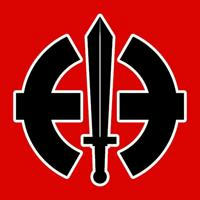
Forteresse Europe - canal d'actualité nationaliste européenne
🇫🇷Canal d'information sur l'actualité nationaliste en Europe. Concernant la liste nationaliste pour les élections européennes 2024 voir https://t.me/euronat2024 🇬🇧Information channel on nationalist news in Europe
Больше- Подписчики
- Просмотры постов
- ER - коэффициент вовлеченности
Загрузка данных...
Загрузка данных...
Julio Ruiz de Alda Miqueleiz, was born on October 7, 1897 in the Spanish municipality of Estella and was assassinated in Madrid on August 23, 1936; he was a Spanish aviator and politician, in addition to being, along with José Antonio Primo de Rivera, co-founder of La Falange Española. Lyrics: La centuria "Ruiz de Alda" es, por su nombre, entre todas, la mejor, y sobre el cielo azul, que él un día cruzó, ya amanece con flechas un nuevo sol. Y en la lucha por el porvenir, de la España que nace para mí, al resuelto pisar, del paso militar, que Falange ha de hacer resurgir. Flecha, lucha, por la grandeza de España; lucha, flecha, lucha por tu libertad, y si un día caes ya, otra estrella brillará. Joven flecha, sigue tras nuestras banderas; joven flecha, sigue sin retroceder, que en centuria juvenil, siempre has de vencer. La Centuria "Ruiz de Alda" es, por su nombre preclaro de valor, la vanguardia de fe, de heroísmo y de honor, por la Patria y el Pan del pueblo español. Y en el aire, la tierra y el mar, ya los brazos se alzan hacia el sol, luchando con afán, por el nuevo esplendor, del ejército azul español. ====================================================== BitChute Channel:
https://www.bitchute.com/channel/AeDLouY6W2yT/Secondary Channel (In case YouTube delete this channel):
https://www.youtube.com/channel/UCdcrFWW1-ZpwS1Sf0B0WCYgLa centuria alata istituto luce italo balbo Benito Mussolini idrovolante savoia marchetti gli atlantici Trasvolata Atlantica Italo Balbo documentario part 1
